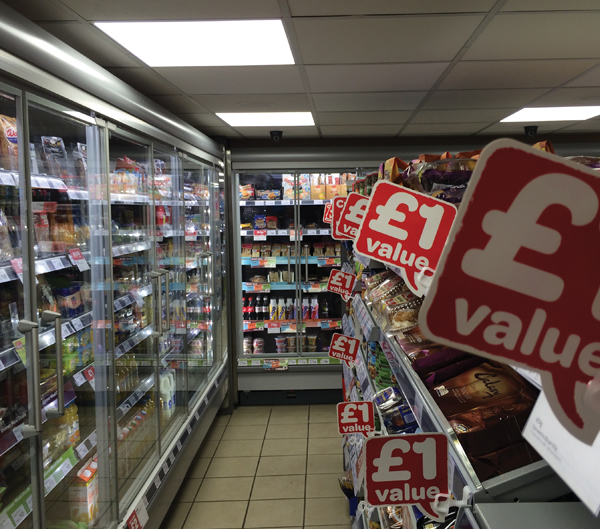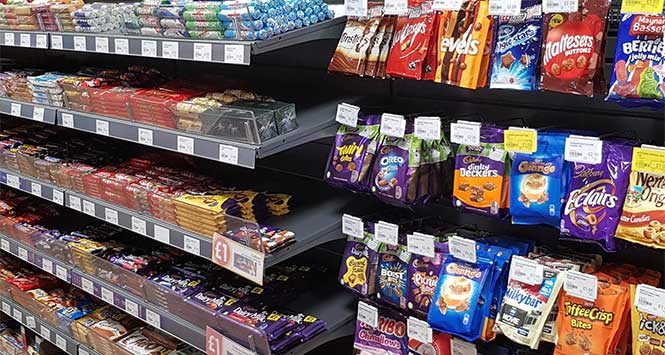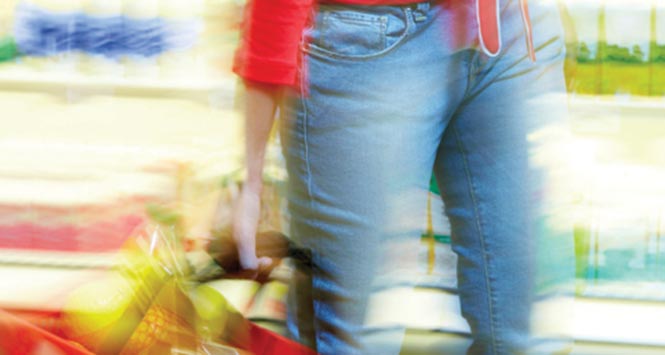The latest findings from him!’s CTP Survey have found that convenience shoppers are on auto-pilot in-store, so it’s up to retailers to snap them out of it and get them adding items to their baskets.
by Kevin Scott
We live in interesting times: consumer price inflation and unemployment are falling, and GDP growth is showing five consecutive quarters of growth since before the crash. But what does all of this mean for local retailers? Does it even affect them at a store level? Well, according to the latest CTP survey by him!, the simple answer is very clearly ‘yes, it does’. The most in-depth annual study ever of the convenience industry in the UK reveals that, thanks to the fragile recovery, rent prices are rising, home ownership is decreasing and disposable income is being squeezed – all of which has an impact on convenience trends. Consumers are more content to shop around than ever (which is a continuing trend from last year) and while some debate has emerged over whether the ‘little and often’ trend is in fact a reality, the CTP findings show that this very factor will help drive growth in convenience over the next year.
The key to growth then is not to hope that a mass of new customers are going to flock through the door. Competition is fiercer than ever as supermarkets attempt to fend of the discounters by playing them at their own game. It would be foolish for convenience retailers to do the same. With budgets being squeezed the key for local retailers is doing a bit of squeezing of their own and ensuring that when customers leave the shop there’s an extra item in their bag.
Engage and interrupt
The question is how to do that most effectively. To find this out, first we must look at what is driving customers into your shop. Him! was the first company to identify the ‘mission’ model of looking at shopping and reports that Meal Occasions and Food to Go missions will both grow by 4%. While Top Up will remain the most important mission, its value is set to drop 4% to £12.3bn (though looking at this in context, Food to Go is worth £5.2bn and Meal Occasions £3.5bn). Over a quarter of all customers (29%) just buy a single item, while 56% buy between 2-4. The remaining 13% buy five or more items. We like those customers. The challenge is to move the single item customers into the 2-4 group, and 2-4 customers into the 5+ group, and get the 5+ baskets a little heavier. All this is a very intricate way of saying that impulse sales need to be increased.
That’s hardly a revolutionary concept, but when him! looks at the detail of how best to achieve this, the true benefit of the CTP survey comes into its own. Let’s examine this large (too large) proportion of customers who only buy one item: by identifying what those single items are and looking at what complements them, retailers are in a far better position to succeed. So what do those pesky single item shoppers buy? Hot drinks, cigarettes, newspapers, lottery tickets and beer, wines and spirits are the lonely items just looking for something to share a shopping bag with.
Many of these items are found near the tillpoint, so utilising this space is the single most important thing a retailer can do. Which brings us neatly onto the second challenge: shopper interruption. Well over half (58%) of shoppers said they failed to see any signs in-store while shopping. By shopping on auto-pilot the customers is not becoming engaged with the store, which is hardly conducive to them being enticed into picking up items beyond those which they have specifically come for. Around 18% of all customers visit the till area alone, so it’s key to engage with them at that vital point. If there’s space, one clear way to do this would be to introduce a queuing system. M&S Simply Food has perfected this. By directing the customer into a space lined with impulse goods, you have their complete attention for the time they’re waiting in the queue (unless they’re buried in their mobile phone). An increasing number of Scottish retailers have already adopted this system, retailers like Shaun Marwaha in Glasgow and Walter Bryson in Prestwick.
Break shopper habits
Clever use of POS can also be hugely beneficial here – as can upselling to customers. Now this is something that must be done carefully, but no one minds being offered a bargain, even if they don’t pick it up. If even one in every 20 customers does, that’s a lot more multi-item customers, and a lot more money in the till at the end of the day. Now let’s look at shoppers who tend to buy five or more items. Him! calls this ‘maximising planned purchases’ and claims that this is the “prize to go after in the high street.” But why should retailers focus so much attention on engaging with shoppers already buying more than five items? For a start, it’s an area where convenience store groups have found success. Over the last four years the entire convenience industry has managed to increase by a single percentage point the number of customers buying two items, but has increased by 3% those buying more than five. And small shops needn’t be hindered here as 12% of customers in stores less than 1,000 sq ft buy five or more items.
These shoppers will visit the same store as many as 200 times a year, so it’s safe to say they’ll known it pretty well, even though they spend, on average, under five minutes in-store. This is a growing trend. The number of consumers who visit only the tillpoint area – 18% – hasn’t changed since 2010. But the percentage of customers who visited every aisle of the store is now at 15%, down 9% on 2010. What’s more, customers only going to aisles where products they want are kept has grown 10% to 67%. This repetitive behaviour disengages customers from their environment. Watch them: they come in, visit the same parts of the store, pay and leave. Interrupt these shoppers and chances are they’ll spend a bit more money with you.
Working together
To fully optimise your store to grow sales retailers need to work with suppliers and wholesalers in a three-pronged system which him! has labelled Consider, Intercept and Instruct. To do this retailers must map the shopper journey, use bold and impactful POS and be sure that they have a clear call to action.
The good news is that promotional leaflets are a hugely effective tool for targeting these 5+ shoppers – the CTP survey found that 73% of symbol shoppers were encouraged to go to the store by a leaflet, while 43% of shoppers visiting an unaffiliated independent were encouraged by a leaflet. If this seems like a lot of hard work that’s because it is. Successful retailers aren’t afraid of hard work, as we all know, and once again by putting the effort in and following the findings of the CTP study, local retailers could ensure that their customers are increasing their engagement in-store, picking up more items and spending more money.





